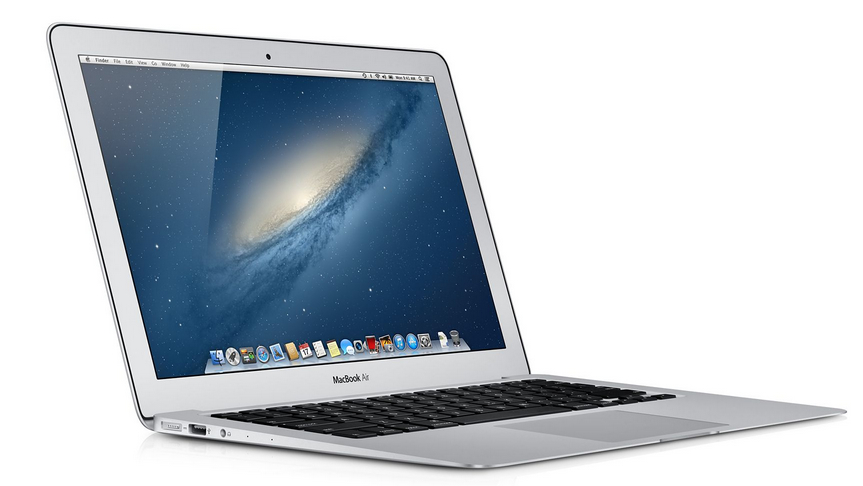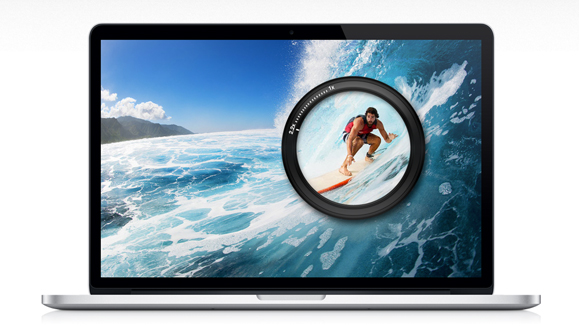Apple MacBook Pro 2013 vs Apple MacBook Air 2013
How does the new MacBook Pro compare to its little brother?

Apple has five types (SKUs) of 13-inch laptops, split between the MacBook Air (MBA) and the MacBook Pro (MBP), more than other notebook types in its portfolio.
They range from £949 (US$ 1,535, AU$ 1,600) for the 13-inch MBA to £1,499 (US$ 2,425, AU$ 2,527) for the 13-inch MBP. Today, we're comparing the £1,129 (US$ 1,827, AU$ 1,903) MBA to the £1,099 (US$ 1,778, AU$ 1,852) MBP, the two closest models in terms of pricing and the most likely to be pitched one against the other.
Apple MacBook Pro 2013 vs Apple MacBook Air 2013: Design
Let's start with the size. The MacBook Air is up to 17mm thick, just 1mm thinner than the MacBook Pro. In reality, the former's tapered shape means that it feels significantly thinner.
- Everything we know about the Retina MacBook Air
Surprisingly, the MacBook Pro is smaller than the MacBook Air (314 x 219mm vs 325 x 227mm) even if it is still marginally heavier at 1.57Kg, a sixth more than its lighter counterpart. Overall though, the MacBook Air will feel more portable with the MBP not far behind.
Apple MacBook Pro 2013 vs Apple MacBook Air 2013: Processor
Both laptops are powered by a fourth-generation Intel Core 'Haswell' processor. The MacBook Pro comes with a dual-core Core-i5 clocked at 2.4GHz with a Turbo Boost of up to 2.9GHz and 3MB L3 cache as well as an Iris subsystem. In comparison, the MacBook Air adopts a much slower dual-core Core i5 model clocked at 1.3GHz with a Turbo Boost of up to 2.6GHz with 3MB L3 cache plus an Intel HD Graphics 5000 GPU.

Apple MacBook Pro 2013 vs Apple MacBook Air 2013: Battery
Having a much more powerful processor and more advanced graphics capabilities means that compromises had been done. The processor on the MacBook Air for example is likely to be an ultra low-voltage model which would explain its 100% Turbo Boost capabilities. Hence, while the 95Whr battery that equips the MacBook Pro may well offer nearly twice the capacity of the one in the MacBook Air, the latter trumps its big brother when it comes to battery life with up to 12 hours worth of wireless web browsing, 50% more.
Apple MacBook Pro 2013 vs Apple MacBook Air 2013: Display
Perhaps one of the reasons behind the relatively low battery life of the MacBook Pro has to do with its 'Retina' display. With a monstrous 4.1MP (2,560 x 1,600 pixels) spread over 13.3in, the MBP offers more than three times the pixel density and the absolute number of pixels compared to the MacBook Air. The MBP can drive two displays at 2,560 x 1,600 pixels compared to only one for the MBA and also boosts support for 4K displays albeit at 30Hz.
Sign up to the TechRadar Pro newsletter to get all the top news, opinion, features and guidance your business needs to succeed!
Apple MacBook Pro 2013 vs Apple MacBook Air 2013: Hardware
Both laptops come with 4GB of 1600MHz LPDDR3 onboard memory and the MacBook Air offers 256GB SSD compared to 128GB for the MacBook Pro. As expected they both are devoid of optical drives and have a SDXC card reader.
Apple MacBook Pro 2013 vs Apple MacBook Air 2013: Connectivity
When it comes to connectivity, the MBP wins hands down. It offers one extra Thunderbolt 2 port and an additional HDMI one. Both have two USB 3.0 connectors, a headphone jack, a card reader, Bluetooth 4.0 and Wi-Fi 802.11ac.

Apple MacBook Pro 2013 vs Apple MacBook Air 2013: Others
The rest of the specification is remarkably similar on both devices with a Facetime HD camera, two speakers, two microphones, a full-size backlit keyboard, a multi-touch trackpad and OS Mavericks (that comes with an assortment of apps).
Apple MacBook Pro 2013 vs Apple MacBook Air 2013: Conclusion
In conclusion, choosing either will depend on your priorities. The MacBook Air wins when it comes to battery life, overall portability and storage capacity while the MacBook Pro will appeal to those looking for a cheaper and more powerful solution with a much sharper, higher resolution screen.

Désiré has been musing and writing about technology during a career spanning four decades. He dabbled in website builders and web hosting when DHTML and frames were in vogue and started narrating about the impact of technology on society just before the start of the Y2K hysteria at the turn of the last millennium.